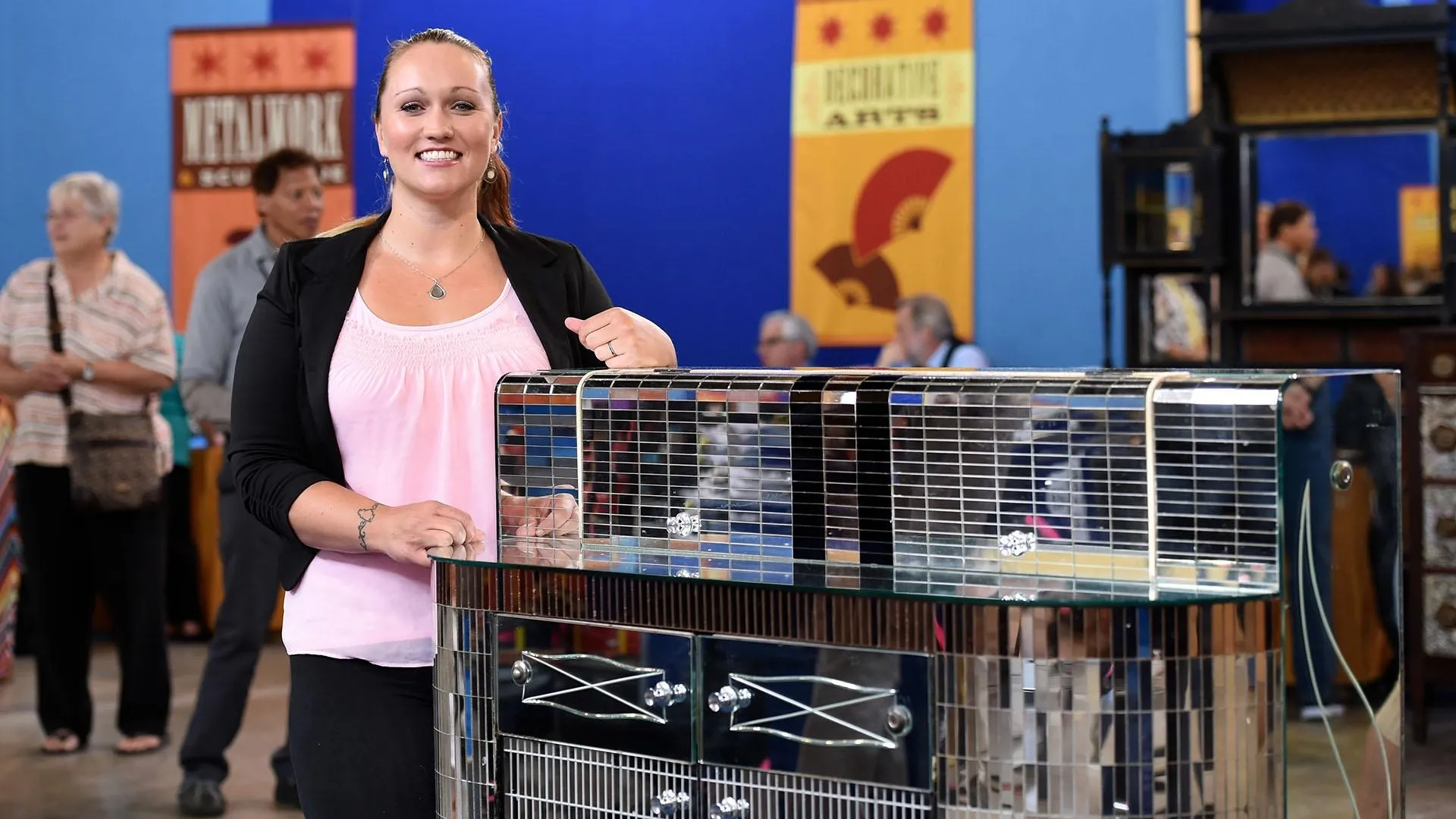GUEST: Well, I brought three pieces of Santa dishes. This one was sitting on the ground at a yard sale with some other pet stuff. He must have thought it was a dog dish, but I was collecting Christmas things. But that was only a dollar.
APPRAISER: Okay, and what'd you pay for the other two? I don't really remember.
GUEST: I think he had these with other dishes, but he had more on them. He thought these were worth more than that thing, but I thought, "That's the best one."
APPRAISER: All three of these pieces are marked with the same mark, okay, which we know as a Roseville Pottery mark.
GUEST: Roseville.
APPRAISER; Now, the American art pottery movement really started in the late part of the 19th century, moving through the early part of the 20th century, and one of the major makers was Roseville, and they came out and they made tons of production ware pieces. They started off in the early 20th century doing custom pieces, and for the most part, the Roseville market has gone way, way down in the last four to five years. So ten years ago, all of this stuff was worth three to four times what it is today. This particular set is what's called a juvenile ware set. They made a number of them. They made the Santa, they made some with chicks, and there were a couple of other designs that they did. And the funny thing is, this pattern's really sought after and hard to find.
GUEST: Because of Santa?
APPRAISER: Because of Santa. If you sold this at auction today, I would expect it to have an estimate, for the whole set, between $1,000 and $1,500.
GUEST: Wow! And he was using it for a dog dish!
APPRAISER: And he was using it for a dog dish. Yeah, if you had a different pattern, one of the chicks or one of the other patterns, it would be worth maybe $150.
GUEST: Yay, Santa!



